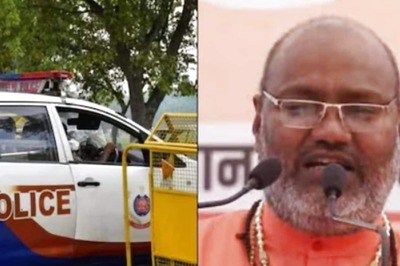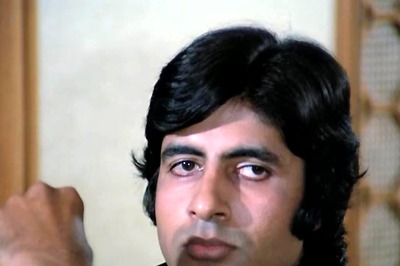
views
Sikhs are undoubtedly the most visible and vocal segment of the Indian diaspora in Canada. And among them, the Khalistanis have got a disproportionate amount of prominence, no doubt as a result of their own rather successful efforts to hijack the community identity in Canada. The Sikhs in Canada who do not support the separatist rhetoric and agenda are low-key and thus even appear to be acquiescent by default. But what about the rest of the Indian diaspora in Canada?
According to Statistique Canada, while there are around 7.7 lakh Canadians of Sikh origin, Hindu Canadians number 8.3 lakh. Even if a number of those Hindus are from the Caribbean, East Africa and the Indian Ocean area, it is clear that non-Sikh, Indian-origin Canadians are almost as numerous as Sikhs. Why would Prime Minister Justin Trudeau then decide to put all his political eggs firmly in the Khalistani basket with an eye on the next general elections?
Like most Canadians (of all ethnicities) Trudeau knows little about the Khalistan movement, from its genesis to its relevance in today’s India. So the Khalistanis find it easy to market themselves as votaries of the “right to self-determination” rather than a terrorist organisation determined to vivisect India. Trudeau also ignorantly imagines all Canadian Sikhs are Khalistan sympathisers and thus figures that wooing extremists would land him that entire community.
But why is no one focussing on the other 8 lakh Indian-origin Canadians? Apart from a Hindu member of Canada’s House of Commons Chandra Arya lambasting his own Liberal Party run government for its inaction against the blatantly threatening and subversive actions of Khalistanis, the non-Sikh Indian segment has stayed out of the frame. Yet they have also been the targets of radical Sikhs — a factor also always conveniently glossed over by Canadian authorities.
Part of the blame for this problem of invisibility may be laid at the door of the broader Indian diaspora. Unlike the Sikhs, who actively foster a cohesive identity with local gurdwaras as the magnet, most other Indian-Canadians have no coalescing factors. Interestingly, there are around 255 gurdwaras in Canada, of which just eight are controlled by Khalistani supporters, according to Indian intelligence sources. And there are around 433 Hindu temples in Canada.
However, apart from the Hindu Bangladeshi migrants who have transplanted their similar temple-centred culture from back home to their new places in Canada, other subcontinental co-religionists have no unified temple congregations. Non-Sikh subcontinentals in Canada remain primarily divided into parochial or regional groupings: Gujarati, Punjabi, Sindhi, Tamil, Malayali, Bengali and the like, each with their distinct cultural, social and even religious circles.
There may be smaller desi social groups that are ‘pan-Indian’ in composition and thus buck the parochial trend, but the subversive mantra of India being merely a union of states rather than a national entity is manifest at a broader level in Canada in the absence of countervailing factors. This despite many of them being second or third-generation Indian-Canadians. There is no Sikh-like feeling of community and common purpose among most of the other Indian-Canadian diaspora.
Thus, their utility as a monolithic vote-bank for any Canadian politician is zilch; they are too diffused and probably internally dissonant too. As a result, Canadian politicians presume — perhaps rightly so — that openly Khalistani sympathies will not dangerously queer the pitch for them with the non-Sikh, south Asian voters, who are perhaps perfectly happy to let the Sikhs dominate public life in Canada as they get on with their lucrative professional goals and personal lives.
Significantly, of the 19 Canadian MPs of Indian origin, Arya is the only non-Punjabi: he emigrated from Karnataka and also recently became the first MP to speak in Kannada in Parliament. Anita Anand, chair of Canada’s treasury board is Hindu too, but half Punjabi and half Tamil. That she as a cabinet minister appears to let Trudeau and Canadian authorities turn a blind eye to Khalistani radical activity indicates the deep dilemma of politicians of this genre.
More so as many non-Sikh Indian-Canadians — particularly those who went there before the 1980s — are also unaware of the hollowness of the Khalistan narrative as they have as little idea of Punjab’s recent history as Trudeau. They have no way of separating fact from emotive rhetoric as Khalistanis peddle tales of “genocide” and “persecution”. They do not know the separatists’ connection with criminal gangs in India and Canada — and that Punjab has moved on.
Indeed, apart from those who lived in north India during the rise of the Punjab “problem” and saw the ugly turn taken by the radicalised followers of Jarnail Singh Bhindranwale which led to the even uglier showdown at the universally revered Harmandir Sahib at Amritsar, very few Indian-Canadians have a clear idea much less an opinion on it. For those who emigrated from Mumbai, Chennai, Surat or Kochi, Blue Star is as distant as the North Star.
The generally unaware and probably uninterested Indian-Canadian diaspora then has no inbuilt resistance to the radical narrative of Khalistanis in public life. They would be as likely as the next white person to believe that Hardeep Singh Nijjar was just an inoffensive plumber with a penchant for gurdwara activities despite evidence, including videos, of his violent agenda and terror activities in India. They would believe that evil Indian Jamshed Bandooks killed him too.
How much the espousal of the Khalistani agenda has affected India’s relationship with Canada is reflected in the fact that Prime Minister Narendra Modi’s visit to that country in 2015 came 42 years after the previous Indian PM went there on an official trip. Ironically that PM was Indira Gandhi, who stayed for eight days in 1973. That Canada chose to harbour those celebrating her killers and the cause they propagate led to a long deep freeze. And now winter is coming again.
The pushback to the Khalistan agenda in Canada cannot only come from India. The Indian-Canadian diaspora as a whole — the 7.7 lakh Sikhs plus 8.3 lakh Hindus, minus Khalistanis — should also clarify where it stands. Does it condone the Khalistani goal of India’s vivisection being supported by Canada’s acts of omission or commission? Do Indian-Canadians think it is ok for their PM to woo a dangerous vote-bank by vilifying India? If not, they should stand up and speak out.
The author is a freelance writer. Views expressed in the above piece are personal and solely that of the author. They do not necessarily reflect News18’s views.



















Comments
0 comment